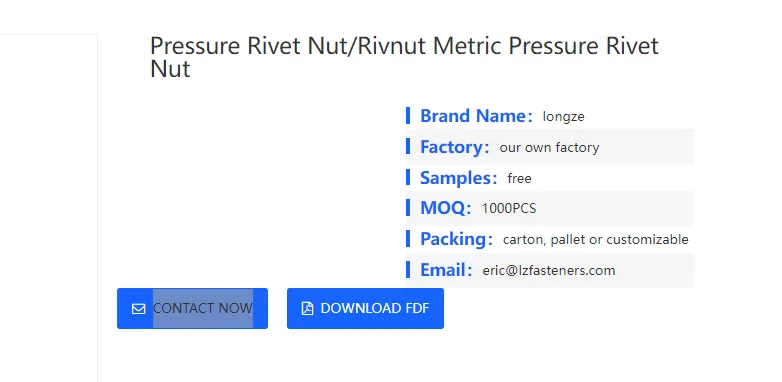

Stud Bolt Installation and Maintenance Tips for Optimal Performance
Sep . 28, 2024 23:39 Back to list
Stud Bolt Installation and Maintenance Tips for Optimal Performance
Understanding Stud Bolts A Comprehensive Overview
Stud bolts are essential components widely used in various industrial applications, particularly in the fields of construction, automotive, and manufacturing. They are specially engineered fasteners characterized by their unique design, which consists of a rod with threads on both ends, and often a non-threaded portion in the middle. This article delves into the intricacies of stud bolts, exploring their types, applications, benefits, and installation methods.
What is a Stud Bolt?
A stud bolt is a type of fastener that can be described as a long rod of metal that is threaded at both ends. Unlike regular bolts, which have a head on one end, stud bolts are installed by screwing into threaded holes in the materials being joined. They often utilize nuts on both ends for a secure fit, making them particularly advantageous in high-stress applications.
Types of Stud Bolts
There are several types of stud bolts, each designed for specific applications
1. Fully Threaded Stud Bolts As the name suggests, these bolts are threaded along their entire length. They are ideal for applications that require even load distribution and are commonly used in pressure vessels and a variety of industrial projects.
2. Partially Threaded Stud Bolts These bolts have threads only on a portion of their length. The unthreaded shank provides a mechanical advantage by allowing for better load-bearing capabilities. This type is frequently used in construction and structural applications.
3. Tension Control Studs Specifically designed for high-stress environments, tension control studs utilize a special installation method that ensures the correct tension is achieved when the bolt is tightened.
4. Flanged Studs These feature a flange at the end of the stud that acts as a bearing surface, simplifying installation and providing added security in joint assemblies.
Applications of Stud Bolts
Stud bolts are used in various applications across multiple industries
. Some common uses include- Oil and Gas Industry Stud bolts play a crucial role in piping systems, connecting pipes, and maintaining the integrity of high-pressure vessels. - Construction In structural steel fabrication, stud bolts are used for connecting beam joints and providing stability to buildings.
- Automotive Manufacturing Stud bolts are employed in various automotive components such as engines and chassis systems, ensuring durability and performance.
- Power Generation In power plants, stud bolts are used to secure various machinery components, ensuring operational efficiency and safety.
stud bolt 1

Benefits of Using Stud Bolts
The use of stud bolts offers numerous advantages
- Strength and Durability Stud bolts are designed to withstand high levels of stress and pressure, making them an excellent choice for heavy-duty applications.
- Easy Installation and Maintenance Since they can be installed from either side of a joint, stud bolts facilitate easier assembly and disassembly, which is especially beneficial during maintenance.
- Versatility With various types available, stud bolts can be customized to meet specific application requirements, enhancing their utility across industries.
- Cost-Effectiveness Despite their complex applications, stud bolts can be more economical over time due to their reliability and reduced maintenance costs.
Installation and Maintenance
Correct installation of stud bolts is critical to their performance. The following steps should be observed
1. Preparation Ensure that the mating surfaces are clean and free of contaminants.
2. Screw In Insert the stud bolt into the pre-threaded hole and hand-tighten it.
3. Torqueing Use a torque wrench to apply the manufacturer's specified torque to the nuts. This process ensures that the stud bolt is secured correctly to handle the required load.
4. Inspection After installation, periodic inspections are essential to identify any signs of wear, corrosion, or loosening, which could compromise the integrity of the assembly.
Conclusion
Stud bolts are a fundamental element in many engineering applications, providing strength and reliability in critical assemblies across industries. Understanding their types, benefits, and installation techniques is crucial for ensuring their effective use. Proper attention to detail during installation and maintenance will yield optimal performance and longevity, making stud bolts an invaluable asset in modern engineering and construction. As industries continue to evolve, the demand for high-quality fasteners like stud bolts will undoubtedly remain strong, driving innovation and improving safety standards worldwide.
Latest news
-
Premium Fasteners Manufacturer | AI-Driven Solutions
NewsAug.01,2025
-
Hot Dip Galvanized Bolts - Hebei Longze | High Strength, Corrosion Resistance
NewsAug.01,2025
-
High-Strength Hot Dip Galvanized Bolts - LongZe | Corrosion Resistance, Custom Sizes
NewsAug.01,2025
-
Best Self Tapping Screws for Drywall - Fast & Secure Installation
NewsJul.31,2025
-
High-Strength Hot Dip Galvanized Bolts-Hebei Longze|Corrosion Resistance&Customization
NewsJul.31,2025
-
Hot Dip Galvanized Bolts-Hebei Longze Metal Products|Corrosion Resistance&High Strength
NewsJul.31,2025

